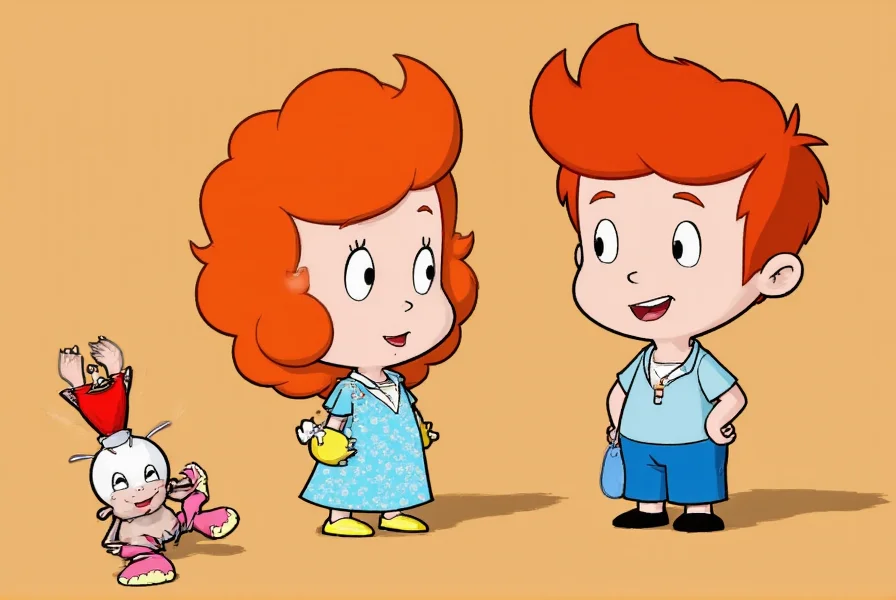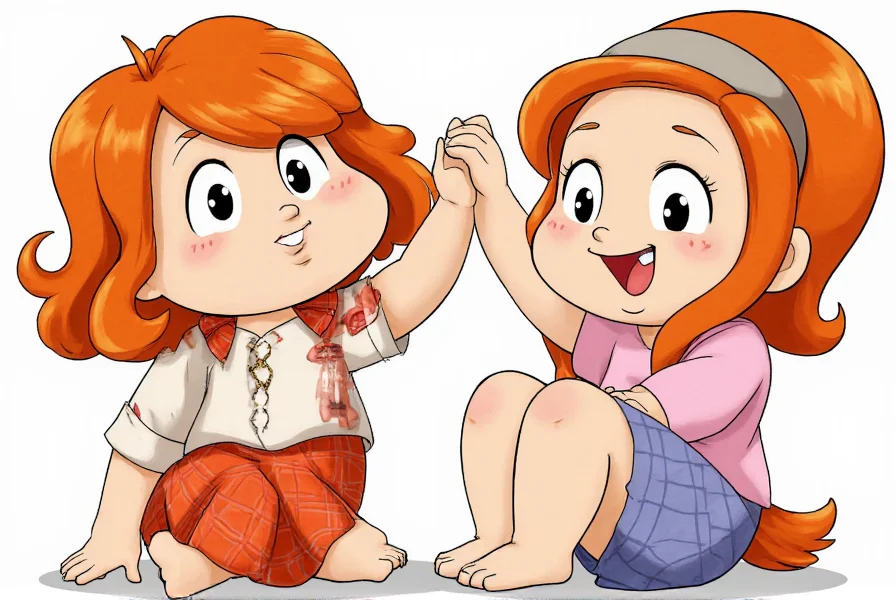Red-haired characters in animation have captivated audiences for decades, offering distinctive visual identities and often embodying spirited, unconventional personalities. The representation of ginger cartoon characters spans across various animation styles, cultural backgrounds, and historical periods, reflecting evolving attitudes toward this distinctive hair color.
The Evolution of Ginger Representation in Animation
Early animation often relied on stereotypes when portraying red-haired characters, frequently depicting them as hot-tempered or mischievous. As animation matured as an art form, creators began developing more nuanced ginger characters with complex personalities that extended beyond their hair color. Modern animation increasingly features ginger characters whose red hair is simply part of their identity rather than their defining characteristic.
Notable Ginger Cartoon Characters Through Animation History
From classic theatrical shorts to contemporary streaming series, ginger characters have made significant contributions to animation history. The following table highlights influential red-haired animated figures across different eras:
| Character | Series/Film | Year Introduced | Significance |
|---|---|---|---|
| Pippi Longstocking | Pippi Longstocking animated series | 1969 | One of animation's earliest strong female protagonists with distinctive red hair and freckles |
| Dexter | Dexter's Laboratory | 1996 | Genius child scientist with red hair whose appearance contrasts with his intellectual persona |
| Merida | Brave | 2012 | Pixar's first female protagonist with voluminous red hair symbolizing her wild spirit |
| San | Princess Mononoke | 1997 | Japanese animation featuring a fierce red-haired protagonist deeply connected to nature |
| Charlie | Bluey | 2018 | Modern children's animation featuring a gentle red-haired character challenging stereotypes |
Cultural Significance of Red Hair in Animation
The portrayal of ginger cartoon characters has evolved from simplistic stereotypes to more authentic representations. Early animation frequently associated red hair with fiery temperaments—a trope that has gradually given way to more diverse characterizations. Contemporary animation increasingly features red-haired characters whose personalities aren't defined by their hair color, reflecting broader societal shifts toward recognizing individual complexity beyond physical traits.
Animation studios worldwide have contributed to ginger character representation. Japanese animation, for instance, often portrays red-haired characters as mystical or spiritually connected figures, while Western animation has historically leaned toward the "fiery redhead" stereotype before moving toward more nuanced portrayals.
Why Ginger Character Representation Matters
For children with red hair, seeing themselves reflected in animation provides important validation and representation. Research suggests that media representation significantly impacts children's self-perception and sense of belonging. Ginger cartoon characters help normalize diverse appearances and challenge narrow beauty standards.
Animation creators now approach ginger character design with greater thoughtfulness, recognizing that hair color alone shouldn't dictate personality traits. This evolution represents animation's broader movement toward more inclusive and authentic character development across all physical characteristics.
Emerging Trends in Ginger Character Design
Contemporary animation shows promising trends in ginger character representation. Recent series feature red-haired protagonists in diverse roles that break from traditional stereotypes—gentle caregivers, thoughtful leaders, and complex anti-heroes. Animation studios are increasingly consulting with diversity experts during character development to ensure authentic representation.
The growing popularity of streaming platforms has enabled more niche animation featuring ginger characters that might not have found mainstream success previously. International collaborations in animation have also introduced global perspectives on red-haired character representation, moving beyond Western-centric interpretations.
What are the most famous ginger cartoon characters in animation history?
Pippi Longstocking stands as one of animation's earliest iconic ginger characters, followed by Dexter from Dexter's Laboratory and Merida from Brave. Other notable figures include San from Princess Mononoke, Charlie from Bluey, and Anne Shirley from the Anne of Green Gables animated adaptations. These characters represent different eras and animation styles while showcasing the evolution of ginger character representation.
Why are ginger characters often portrayed with specific personality traits in animation?
Historically, animation relied on visual shorthand to quickly establish character traits, and red hair became associated with fiery temperaments due to cultural stereotypes. This simplified characterization helped audiences immediately understand a character's potential role in the story. Modern animation has largely moved beyond these reductive portrayals, creating ginger characters with complex personalities that aren't defined by their hair color.
How has the representation of ginger cartoon characters changed over time?
Early animation frequently depicted ginger characters with one-dimensional personalities centered around temperamental traits. Contemporary animation features more nuanced portrayals where red hair is simply part of a character's appearance rather than their defining characteristic. Modern creators approach ginger character design with greater thoughtfulness, recognizing that physical traits shouldn't dictate personality, reflecting broader societal shifts toward inclusive representation.
Are there cultural differences in how ginger characters are portrayed internationally?
Yes, cultural contexts significantly influence ginger character portrayals. Western animation has traditionally associated red hair with fiery personalities, while Japanese animation often depicts red-haired characters as mystical or spiritually connected figures. European animation sometimes draws from local folklore where red hair carries different symbolic meanings. These cultural variations reflect diverse interpretations of red hair across global storytelling traditions.
Why is representation of ginger characters important in children's animation?
Representation matters because children with red hair benefit from seeing themselves reflected in media, which validates their identity and fosters self-acceptance. Diverse character representation helps all children understand and appreciate human variation. When animation moves beyond stereotypes to present ginger characters as fully realized individuals, it challenges narrow beauty standards and promotes inclusivity in how we view physical differences.

As animation continues to evolve, ginger cartoon characters will likely become even more diverse and nuanced, reflecting our increasingly global and inclusive understanding of human diversity. The journey from stereotypical portrayals to authentic representation demonstrates animation's capacity to grow alongside societal understanding of identity and diversity.











 浙公网安备
33010002000092号
浙公网安备
33010002000092号 浙B2-20120091-4
浙B2-20120091-4